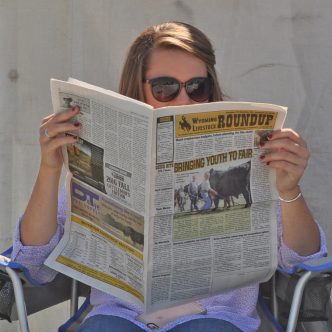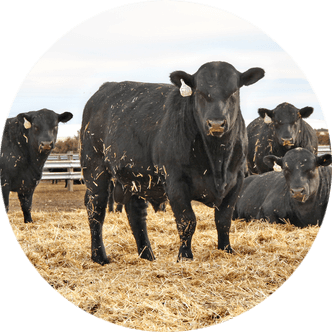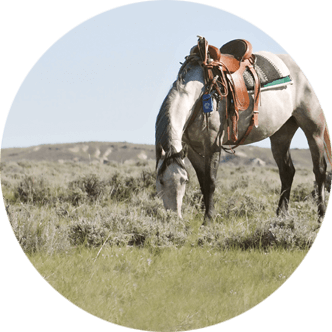TAMU highlights ways to take the reins on responsible horse breeding
For many horse owners, breeding is an opportunity to shape the next generation – whether by continuing a trusted mare’s legacy or raising a foal with carefully selected traits like temperament, athletic ability or pedigree.
While it can be a deeply rewarding experience, breeding requires a long-term commitment and thoughtful preparation to help ensure a healthy outcome for both mare and foal.
Dr. Mariah Pearson, clinical assistant professor at the Texas A&M College of Veterinary Medicine and Biomedical Sciences, emphasizes the importance of preparation and offers valuable insights into the mare breeding process.
Starting on the right hoof
Because breeding season typically begins in early spring, planning should start in the fall to allow time for health evaluations, reproductive screenings and discussions with a veterinarian to ensure mares are fully prepared.
The first step is to have a trusted veterinarian perform a breeding soundness exam, an assessment which evaluates a mare’s overall health and reproductive condition through a physical exam, palpation, ultrasound and, sometimes, testing for potential infections in the uterus.
“Mares need to be systemically healthy first,” Pearson said. “This means no metabolic diseases, no severe lameness and a sound body condition.”
Without the breeding soundness exam, underlying problems may go unnoticed and lead to serious complications in the future.
“A lot of times, people love their mare so much they want her to have a baby, but they don’t think about all of the potential problems that come with it,” Pearson said. “They could spend all of this money to get their mare pregnant, and then she has trouble giving birth, putting her life at risk.”
Even manageable conditions can worsen under the physical demands of pregnancy.
“Getting pregnant puts weight on a mare. If she has laminitis or tendon problems, lameness could get worse,” Pearson said.
If a mare is not a candidate for pregnancy, embryo transfer or other alternatives may be worth discussing with a veterinarian.
‘Foal’ proof planning
Another important step in preparing a mare for breeding is discussing genetic testing.
“Certain breeds have known genetic problems,” Pearson said. “If a mare carries a genetic disorder, breeding her could pass it on.”
Timing also plays a major role. Mares are seasonally polyestrous, meaning they cycle during months with the longest amount of daylight. Most begin cycling naturally in spring, but artificial lighting can stimulate earlier cycles.
“I love to see mares early in their cycle – ideally in January if they are under lights or in March and April if not,” Pearson said. “The challenge comes during the transition period, when mares may act like they’re in heat but have not ovulated yet.”
Age matters, too. Younger mares tend to conceive more easily and carry foals with fewer complications.
“The quality of a mare’s eggs declines with time because she’s born with all she’ll ever have,” Pearson said. “Breeding younger mares generally gives better results, especially if we want her to carry the foal herself rather than using a recipient mare.”
Bridling the budget
Breeding is not only physically demanding, it can also be a significant financial responsibility. Even if a mare is generally healthy, complications can make it more expensive than planned.
“Getting a mare ready to breed – even a young, healthy one – can cost thousands of dollars,” Pearson said. “She might need multiple exams or antibiotics for uterine infections before conception even happens.”
After breeding, the mare will need veterinary checkups at key milestones such as 14 days post-ovulation to confirm pregnancy, 25 to 28 days to check for a heartbeat and 35 to 45 days to make sure the pregnancy is progressing.
Throughout gestation, a veterinarian may also recommend vaccinations for equine herpesvirus at five, seven and nine months and/or fetal sexing, typically performed between 63 and 73 days or 100 and 120 days.
Breeding a mare is a big decision – medically, emotionally and financially. Horse owners should carefully consider not only their mare’s physical health and genetic history but also their own readiness for the long-term commitment involved.
Individuals who are thinking about breeding their mares should be sure to talk with a veterinarian early to develop a good plan.
“Breeding isn’t for the faint of heart,” Pearson said. “It’s important to understand the risks and responsibilities before you start. This way, you’re prepared – not just for the foal, but for everything that comes with it.”
Pasture Talk is a service of Texas A&M University’s College of Veterinary Medicine and Biomedical Sciences. For more information or to subscribe, visit vetmed.tamu.edu/news/tag/pasture-talk/. This article was originally published by Pasture Talk on Sept. 11.





